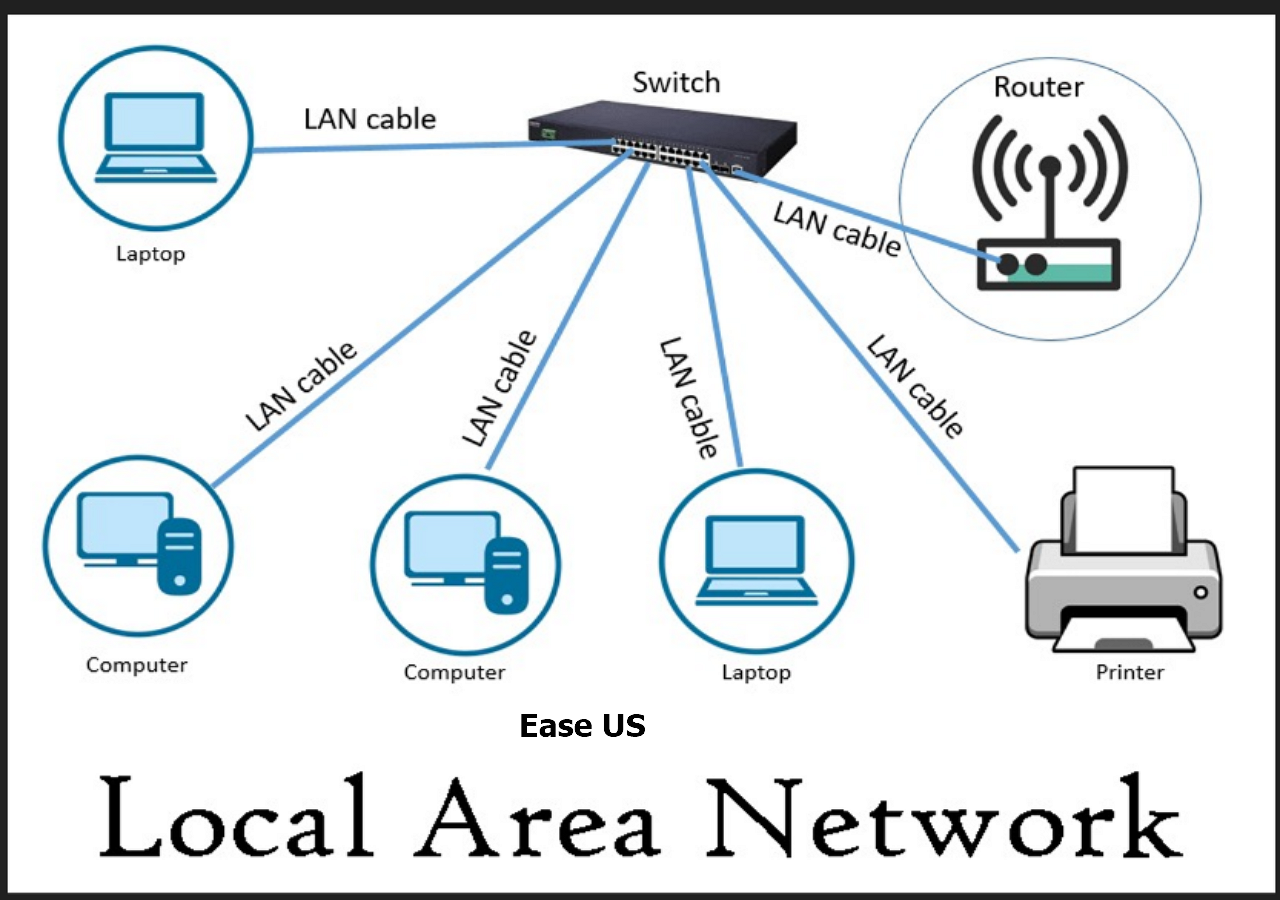Introduction
In the realm of computer networking, Local Area Networks (LANs) play a pivotal role in connecting devices and facilitating seamless communication within a restricted geographical area. LANs have become an essential part of modern workplaces, educational institutions, and even homes, enabling the sharing of resources, data, and services. This article aims to delve deep into the world of LANs, exploring their fundamentals, architecture, components, benefits, challenges, and future trends, all of which contribute to the ever-evolving landscape of network connectivity.
Definition and Overview
A Local Area Network (LAN) is a network of interconnected computers and other devices within a limited geographic area, such as a building, office, school, or home. LANs have relatively high data transfer rates, low latency, and are usually privately owned and maintained. They provide the backbone for local communications and enable users to access shared resources like printers, files, and databases, fostering collaboration and efficient workflows.
LAN Architecture
LANs are structured using various topologies and protocols that define how devices interact with each other. The most common LAN topologies include:
a. Star Topology: In this configuration, all devices connect to a central hub, which serves as the focal point for data transmission and reception. This design simplifies network management but is susceptible to a single point of failure if the hub malfunctions.
b. Bus Topology: Devices are connected along a single cable (the bus) where data is transmitted from one end to another. While it is simple and cost-effective, a failure in the main cable can disrupt the entire network.
c. Ring Topology: Devices form a closed-loop where data circulates in one direction, passing through each device until it reaches the intended recipient. Despite its efficiency, a single device failure can disrupt the entire ring.
d. Mesh Topology: Each device is connected to every other device in the network, creating multiple redundant paths for data transmission. This configuration ensures high reliability but can be complex to implement and maintain.
LAN Components
The key components of a LAN include:
a. Network Interface Card (NIC): Also known as a network adapter, the NIC enables devices to connect to the LAN physically and access the network.
b. Switches and Hubs: These devices serve as central points for data forwarding within a LAN. Switches are more advanced than hubs as they process data and send it directly to the intended recipient, reducing unnecessary traffic.
c. Routers: While primarily associated with Wide Area Networks (WANs), routers can also be used in LANs to connect multiple subnets and enable communication between them.
d. Cabling: Various types of cables, such as Ethernet cables (e.g., Cat5e, Cat6), fiber optic cables, or wireless technologies like Wi-Fi, connect devices within the LAN.
LAN Protocols
LANs utilize various protocols to facilitate communication, data exchange, and resource sharing. The most prevalent LAN protocol is Ethernet, which defines rules for data transmission over the physical medium. Ethernet employs the Carrier Sense Multiple Access with Collision Detection (CSMA/CD) method, ensuring efficient and collision-free data transfer within the LAN.
Additionally, Internet Protocol (IP) is commonly used in LANs to enable communication between devices with unique IP addresses. Dynamic Host Configuration Protocol (DHCP) automates the assignment of IP addresses, simplifying network management. Other protocols like Address Resolution Protocol (ARP) and Domain Name System (DNS) play crucial roles in translating IP addresses to MAC addresses and resolving domain names to IP addresses, respectively.
LAN Security
Security is of paramount importance for any network, and LANs are no exception. As local networks often hold sensitive data and shared resources, they are vulnerable to various threats like unauthorized access, data breaches, malware, and denial-of-service attacks. To safeguard a LAN, administrators implement a range of security measures:
a. Firewalls: Network firewalls monitor and control incoming and outgoing traffic, preventing unauthorized access and filtering potentially harmful data packets.
b. Virtual LANs (VLANs): VLANs segment the network into logical subgroups, allowing administrators to control access and communication between different groups of devices.
c. Network Access Control (NAC): NAC systems enforce security policies by requiring devices to adhere to specific criteria, such as antivirus installation or system updates, before granting network access.
d. Encryption: Data encryption ensures that information transmitted across the LAN is unreadable to unauthorized entities, safeguarding sensitive data from interception.
e. Intrusion Detection and Prevention Systems (IDS/IPS): These systems monitor network traffic for suspicious activity and can take action to block or alert administrators about potential threats.
Advantages of LANs
LANs offer numerous benefits, making them an indispensable part of modern network infrastructure:
a. Resource Sharing: LANs allow devices to share resources such as printers, scanners, and storage devices, optimizing resource utilization and reducing costs.
b. Centralized Data Management: Data can be stored on centralized servers, making backups and data management more efficient.
c. Enhanced Collaboration: LANs facilitate real-time communication, enabling seamless collaboration among employees, students, or residents within the local network.
d. Increased Productivity: With access to shared resources and data, users can work more efficiently, improving overall productivity.
e. Faster Data Transfer: LANs typically have high data transfer rates, ensuring quick access to shared resources and reducing delays.
f. Scalability: LANs can be scaled to accommodate an increasing number of devices and users without significant changes in infrastructure.
Challenges and Limitations
Despite their advantages, LANs face some challenges and limitations:
a. Limited Range: LANs are designed for local communication, which means they have restricted coverage compared to Wide Area Networks (WANs).
b. Infrastructure Costs: Setting up and maintaining a LAN can be costly, particularly for larger networks with advanced hardware requirements.
c. Network Congestion: As more devices are added to the network, congestion may occur, impacting data transfer speeds and user experience.
d. Security Risks: LANs are vulnerable to security breaches, especially if robust security measures are not in place.
e. Single Point of Failure: In certain LAN topologies, a single point of failure can bring down the entire network.
Future Trends in LANs
As technology evolves, LANs are likely to witness significant advancements in the following areas:
a. Gigabit and Multi-Gigabit Ethernet: Faster Ethernet standards will continue to emerge, providing even higher data transfer rates for LANs.
b. Wi-Fi 6 and Beyond: Wireless LANs will see improvements in speed, capacity, and efficiency, supporting the increasing number of wireless devices.
c. Software-Defined Networking (SDN): SDN will simplify LAN management, making it more agile and adaptable to changing demands.
d. Internet of Things (IoT) Integration: LANs will be further integrated with IoT devices, facilitating seamless communication and control.
e. Enhanced Security Measures: With the growing sophistication of cyber threats, LANs will adopt more robust security measures to safeguard against breaches and attacks.
Conclusion
Local Area Networks have revolutionized modern communication and resource sharing, providing the foundation for efficient and productive workplaces, educational environments, and connected homes. Understanding the architecture, components, protocols, security measures, and challenges of LANs is vital for network administrators and users alike. As technology continues to progress, LANs will continue to evolve, playing a crucial role in shaping the future of connected communities and







